formerly eScholarship Editions


|
|
|
|
Your search for
'Californian and Western History' in subject
found 68 book(s). | Modify Search | Displaying 41 - 60 of 68 book(s) | |
| 41. | 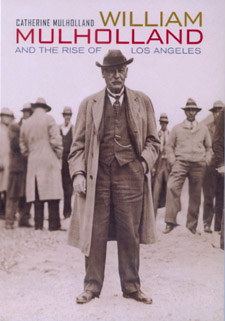 | Title: William Mulholland and the rise of Los Angeles Author: Mulholland, Catherine 1923- Published: University of California Press, 2000 Subjects: History | California and the West | Californian and Western History | Autobiographies and Biographies Publisher's Description: William Mulholland presided over the creation of a water system that forever changed the course of southern California's history. Mulholland, a self-taught engineer, was the chief architect of the Owens Valley Aqueduct - a project ranking in magnitude and daring with the Panama Canal - that brought water to semi-arid Los Angeles from the lush Owens Valley. The story of Los Angeles's quest for water is both famous and notorious: it has been the subject of the classic yet historically distorted movie Chinatown, as well as many other accounts. This first full-length biography of Mulholland challenges many of the prevailing versions of his life story and sheds new light on the history of Los Angeles and its relationship with its most prized resource: water. Catherine Mulholland, the engineer's granddaughter, provides insights into this story that family familiarity affords, and adds to our historical understanding with extensive primary research in sources such as Mulholland's recently uncovered office files, newspapers, and Department of Water and Power archives. She scrutinizes Mulholland's life - from his childhood in Ireland to his triumphant completion of the Owens Valley Aqueduct to the tragedy that ended his career. This vivid portrait of a rich chapter in the history of Los Angeles is enhanced with a generous selection of previously unpublished photographs. Los Angeles Times Best Nonfiction Book of 2000 [brief] Similar Items |
| 42. | 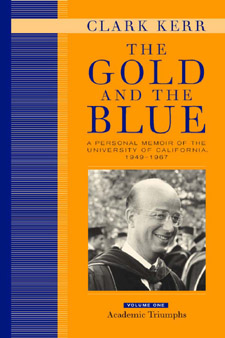 | Title: The gold and the blue: a personal memoir of the University of California, 1949-1967 Author: Kerr, Clark 1911- Published: University of California Press, 2001 Subjects: History | California and the West | Intellectual History | Californian and Western History | Autobiography Publisher's Description: One of the last century's most influential figures in higher education, Clark Kerr was a leading visionary, architect, leader, and fighter for the University of California. Chancellor of the Berkeley campus from 1952 to 1958 and president of the university from 1958 to 1967, Kerr saw the university through its golden years--a time of both great advancement and great conflict. This absorbing memoir is an intriguing insider's account of how the University of California rose to the peak of scientific and scholarly stature and how, under Kerr's unique leadership, the university evolved into the institution it is today. In this first of two volumes, Kerr describes the private life of the university from his first visit to Berkeley as a graduate student at Stanford in 1932 to his dismissal under Governor Ronald Reagan in 1967. Early in his tenure as a professor, the Loyalty Oath issue erupted, and the university, particularly the Berkeley campus, underwent its most difficult upheaval until the onset of the Free Speech Movement in 1964. Kerr discusses many pivotal developments, including the impact of the GI Bill and the evolution of the much-emulated 1960 California Master Plan for Higher Education. He also discusses the movement for universal access to education and describes the establishment and growth of each of the nine campuses and the forces and visions that shaped their distinctive identities. Kerr's perspective of more than fifty years puts him in a unique position to assess which of the academic, structural, and student life innovations of the 1950s and 1960s have proven successful and to consider what lessons about higher education we might learn from that period. The second volume of the memoir will treat the public life of the university and the political context that conditioned its environment. [brief] Similar Items |
| 43. | 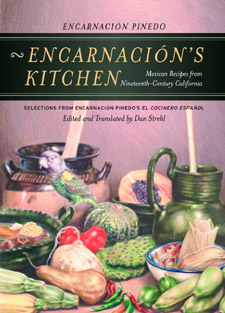 | Title: Encarnación's kitchen: Mexican recipes from nineteenth-century California: selections from Encarnación Pinedo's El cocinero español Author: Pinedo, Encarnación b. 1848 Published: University of California Press, 2003 Subjects: Food and Cooking | California and the West | Californian and Western History | Ethnic Studies | Women's Studies Publisher's Description: In 1991 Ruth Reichl, then a Los Angeles Times food writer, observed that much of the style now identified with California cuisine, and with nouvelle cuisine du Mexique, was practiced by Encarnación Pinedo a century earlier. A landmark of American cuisine first published in 1898 as El cocinero español (The Spanish Cook), Encarnación's Kitchen is the first cookbook written by a Hispanic in the United States, as well as the first recording of Californio food - Mexican cuisine prepared by the Spanish-speaking peoples born in California. Pinedo's cookbook offers a fascinating look into the kitchens of a long-ago culture that continues to exert its influence today. Of some three hundred of Pinedo's recipes included here - a mixture of Basque, Spanish, and Mexican - many are variations on traditional dishes, such as chilaquiles, chiles rellenos, and salsa (for which the cook provides fifteen versions). Whether describing how to prepare cod or ham and eggs (a typical Anglo dish labeled "huevos hipócritas" ), Pinedo was imparting invaluable lessons in culinary history and Latino culture along with her piquant directions. In addition to his lively, clear translation, Dan Strehl offers a remarkable view of Pinedo's family history and of the material and literary culture of early California cooking. Prize-winning journalist Victor Valle puts Pinedo's work into the context of Hispanic women's testimonios of the nineteenth century, explaining how the book is a deliberate act of cultural transmission from a traditionally voiceless group. [brief] Similar Items |
| 44. | 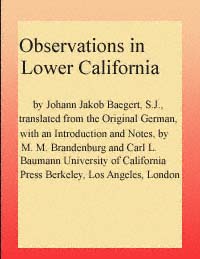 | Title: Observations in Lower California Author: Baegert, Jacob 1717-1772 Published: University of California Press, 1979 Subjects: History | United States History | California and the West | Californian and Western History Similar Items |
| 45. | 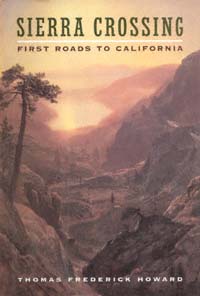 | Title: Sierra crossing: first roads to California Author: Howard, Thomas Frederick 1946- Published: University of California Press, 1998 Subjects: California and the West | Californian and Western History | Geography | United States History Publisher's Description: A critical era in California's history and development - the building of the first roads over the Sierra Nevada - is thoroughly and colorfully documented in Thomas Howard's fascinating book. During California's first two decades of statehood (1850-1870), the state was separated from the east coast by a sea journey of at least six weeks. Although Californians expected to be connected with the other states by railroad soon after the 1849 Gold Rush, almost twenty years elapsed before this occurred. Meanwhile, various overland road ventures were launched by "emigrants," former gold miners, state government officials, the War Department, the Interior Department, local politicians, town businessmen, stagecoach operators, and other entrepreneurs whose alliances with one another were constantly shifting. The broad landscape of international affairs is also a part of Howard's story.Constructing roads and accumulating geographic information in the Sierra Nevada reflected Washington's interest in securing the vast western territories formerly held by others. In a remarkably short time the Sierra was transformed by vigorous exploration, road-promotion, and road-building. Ox-drawn wagons gave way to stagecoaches able to provide service as fine as any in the country. Howard effectively uses diaries, letters, newspaper stories, and official reports to recreate the human struggle and excitement involved in building the first trans-Sierra roads. Some of those roads have become modern highways used by thousands every day, while others are now only dim traces in the lonely backcountry. [brief] Similar Items |
| 46. | 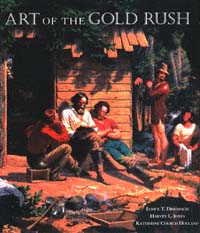 | Title: Art of the gold rush Author: Driesbach, Janice Tolhurst Published: University of California Press, 1998 Subjects: Art | California and the West | Californian and Western History Publisher's Description: The California Gold Rush captured the get-rich dreams of people around the world more completely than almost any event in American history. This catalog, published in celebration of the sesquicentennial of the 1848 discovery of gold at Sutter's Mill, shows the vitality of the arts in the Golden State during the latter nineteenth century and documents the dramatic impact of the Gold Rush on the American imagination.Among the throngs of gold-seekers in California were artists, many self-taught, others formally trained, and their arrival produced an outpouring of artistic works that provide insights into Gold Rush events, personages, and attitudes. The best-known painting of the Gold Rush era, C.C. Nahl's Sunday Morning in the Mines (1872), was created nearly two decades after gold fever had subsided. By then the Gold Rush's mythic qualities were well established, and new allegories - particularly the American belief in the rewards of hard work and enterprise - can be seen on Nahl's canvas. Other works added to the image of California as a destination for ambitious dreamers, an image that prevails to this day. In bringing together a range of art and archival material such as artists' diaries and contemporary newspaper articles, The Art of the Gold Rush broadens our understanding of American culture during a memorable period in the nation's history. [brief] Similar Items |
| 47. | 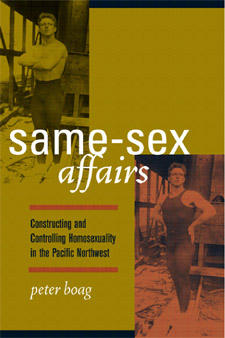 | Title: Same-sex affairs: constructing and controlling homosexuality in the Pacific Northwest Author: Boag, Peter Published: University of California Press, 2003 Subjects: Gender Studies | History | Men and Masculinity | Californian and Western History | Urban Studies | GayLesbian and Bisexual Studies | Sociology Publisher's Description: At the turn of the twentieth century, two distinct, yet at times overlapping, male same-sex sexual subcultures had emerged in the Pacific Northwest: one among the men and boys who toiled in the region's logging, fishing, mining, farming, and railroad-building industries; the other among the young urban white-collar workers of the emerging corporate order. Boag draws on police logs, court records, and newspaper accounts to create a vivid picture of the lives of these men and youths--their sexual practices, cultural networks, cross-class relations, variations in rural and urban experiences, and ethnic and racial influences. [brief] Similar Items |
| 48. | 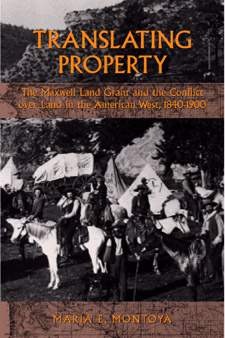 | Title: Translating property: the Maxwell Land Grant and the conflict over land in the American West, 1840-1900 Author: Montoya, María E 1964- Published: University of California Press, 2002 Subjects: History | Californian and Western History | Law | Latino Studies | California and the West | California and the West Publisher's Description: Although Mexico lost its northern territories to the United States in 1848, battles over property rights and ownership have remained intense. This turbulent, vividly narrated story of the Maxwell Land Grant, a single tract of 1.7 million acres in northeastern New Mexico, shows how contending groups reinterpret the meaning of property to uphold their conflicting claims to land. The Southwest has been and continues to be the scene of a collision between land regimes with radically different cultural conceptions of the land's purpose. We meet Jicarilla Apaches, whose identity is rooted in a sense of place; Mexican governors and hacienda patrons seeking status as New World feudal magnates; "rings" of greedy territorial politicians on the make; women finding their own way in a man's world; Anglo homesteaders looking for a place to settle in the American West; and Dutch investors in search of gargantuan returns on their capital. The European and American newcomers all "mistranslated" the prior property regimes into new rules, to their own advantage and the disadvantage of those who had lived on the land before them. Their efforts to control the Maxwell Land Grant by wrapping it in their own particular myths of law and custom inevitably led to conflict and even violence as cultures and legal regimes clashed. [brief] Similar Items |
| 49. | 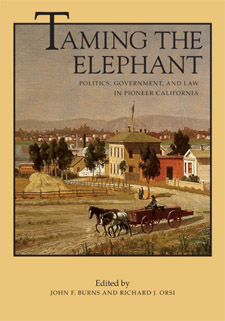 | Title: Taming the elephant: politics, government, and law in pioneer California Author: Burns, John F Published: University of California Press, 2003 Subjects: History | Californian and Western History | United States History | California and the West Publisher's Description: Taming the Elephant is the last of four volumes in the distinguished California History Sesquicentennial Series, an outstanding compilation of original essays by leading historians and writers. These topical, interrelated volumes reexamine the meaning of the founding of modern California during the state's pioneer period. General themes run through all four volumes: the interplay of traditional cultures and frontier innovation in the creation of a distinctive California society; the dynamic interaction of people and nature and the beginnings of massive environmental change; the impact of the California experience on the nation and the world; the influence of pioneer patterns on modern California; and the legacy of ethnic and cultural diversity as a major influence on the state's history. This fourth volume treats the role of post-Gold Rush California government, politics, and law in the building of a dynamic state, with influences that persist today. Provocative essays investigate the creation of constitutional foundations, law and jurisprudence, the formation of government agencies, and the development of public policy. Authors chart the roles played by diverse groups - criminals and peace officers, entrepreneurs and miners, farmers and public officials, defenders of discrimination and female and African American activists. The essays also explore subjects largely overlooked in the past, such as the significance of local and federal government in pioneer California and early struggles to secure civil rights for women and racial minorities. [brief] Similar Items |
| 50. | 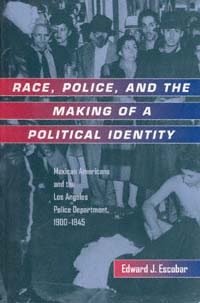 | Title: Race, police, and the making of a political identity: Mexican Americans and the Los Angeles Police Department, 1900-1945 Author: Escobar, Edward J 1946- Published: University of California Press, 1999 Subjects: History | California and the West | Latin American History | Latino Studies | Social Problems | Politics | Californian and Western History | Urban Studies | Criminology | Criminology Publisher's Description: In June 1943, the city of Los Angeles was wrenched apart by the worst rioting it had seen to that point in the twentieth century. Incited by sensational newspaper stories and the growing public hysteria over allegations of widespread Mexican American juvenile crime, scores of American servicemen, joined by civilians and even police officers, roamed the streets of the city in search of young Mexican American men and boys wearing a distinctive style of dress called a Zoot Suit. Once found, the Zoot Suiters were stripped of their clothes, beaten, and left in the street. Over 600 Mexican American youths were arrested. The riots threw a harsh light upon the deteriorating relationship between the Los Angeles Mexican American community and the Los Angeles Police Department in the 1940s.In this study, Edward J. Escobar examines the history of the relationship between the Los Angeles Police Department and the Mexican American community from the turn of the century to the era of the Zoot Suit Riots. Escobar shows the changes in the way police viewed Mexican Americans, increasingly characterizing them as a criminal element, and the corresponding assumption on the part of Mexican Americans that the police were a threat to their community. The broader implications of this relationship are, as Escobar demonstrates, the significance of the role of the police in suppressing labor unrest, the growing connection between ideas about race and criminality, changing public perceptions about Mexican Americans, and the rise of Mexican American political activism. [brief] Similar Items |
| 51. | 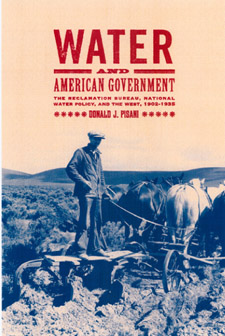 | Title: Water and American government: the Reclamation Bureau, national water policy, and the West, 1902-1935 Author: Pisani, Donald J Published: University of California Press, 2002 Subjects: History | United States History | Water | Public Policy | Geography | California and the West | Californian and Western History Publisher's Description: Donald Pisani's history of perhaps the boldest economic and social program ever undertaken in the United States--to reclaim and cultivate vast areas of previously unusable land across the country - shows in fascinating detail how ambitious government programs fall prey to the power of local interest groups and the federal system of governance itself. What began as the underwriting of a variety of projects to create family farms and farming communities had become by the 1930s a massive public works and regional development program, with an emphasis on the urban as much as on the rural West. [brief] Similar Items |
| 52. | 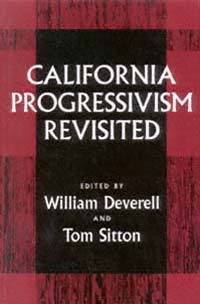 | Title: California progressivism revisited Author: Deverell, William Francis Published: University of California Press, 1994 Subjects: History | Politics | United States History | Californian and Western History | California and the West Publisher's Description: California was perhaps the most important locus for the development of the Progressive reform movement in the decades of the twentieth century. These twelve original essays represent the best of the new scholarship on California Progressivism. Ranging across a spectrum that embraces ethnicity, gender, class, and varying ideological stances, the authors demonstrate that reform in California was a far broader, more complicated phenomenon than we have previously understood.Since the 1950s, scholars have used California Progressivism as a model case study for explaining early twentieth-century social and political reform nationwide. But such a model - which ignored issues of class, race, and gender - simplified a political movement that was, in fact, quite complex.In revising the monolithic interpretation of reform and reformers, this volume provides a better understanding of the sweeping reform impulses that had such a profound effect on American political and social institutions during this century. Equally important, the issues examined here offer significant insights into problems that the entire country must tackle as we approach the new century. [brief] Similar Items |
| 53. | 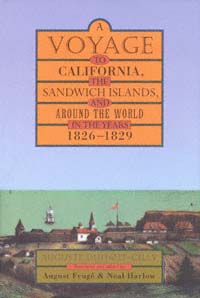 | Title: A voyage to California, the Sandwich Islands & around the world in the years, 1826-1829 Author: Duhaut-Cilly, Auguste Bernard 1790-1849 Published: University of California Press, 1999 Subjects: California and the West | Californian and Western History | United States History | Literature in Translation | Travel Publisher's Description: While French sea captain Auguste Duhaut-Cilly may not have become wealthy from his around-the-world travels between 1826 and 1829, his trip has enriched historians interested in early nineteenth-century California. Because of a poor choice in goods to trade he found it necessary to spend nearly two years on the Alta and Baja California coasts before disposing of his cargo and returning to France. What was bad luck for Duhaut-Cilly was good luck for us, however, because he recorded his impressions of the region's natural history and human populations in a diary. This translation of Duhaut-Cilly's writing offers today's readers a rare eyewitness account of the pastoral society that was Mexican California, including the missions at the height of their power.A veteran of the Napoleonic wars, Duhaut-Cilly was an educated man conversant in Spanish and English. He was also Catholic, which gave him special access to the California missions. Thus his diary allows the reader an insider's view of the padres' lives, including their dealings with the military. Through his eyes we see the region's indigenous people and how they were treated, and we're privy to his commentary on the behavior of the Californios.This translation also contains Duhaut-Cilly's account of the Sandwich Islands portion of his voyage and provides an authentic rendering of life at sea during the early nineteenth century. In the spirit of Richard Henry Dana's Two Years before the Mast , Duhaut-Cilly's reflections are a historical gem for anyone with a love of personal narratives and original accounts of the past. [brief] Similar Items |
| 54. | 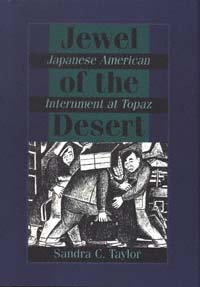 | Title: Jewel of the desert: Japanese American internment at Topaz Author: Taylor, Sandra C Published: University of California Press, 1993 Subjects: History | Californian and Western History | Asian American Studies | American Studies Publisher's Description: In the spring of 1942, under the guise of "military necessity," the U.S. government evacuated 110,000 Japanese Americans from their homes on the West Coast. About 7,000 people from the San Francisco Bay Area - the vast majority of whom were American citizens - were moved to an assembly center at Tanforan Racetrack and then to a concentration camp in Topaz, Utah. Dubbed the "jewel of the desert," the camp remained in operation until October 1945. This compelling book tells the history of Japanese Americans of San Francisco and the Bay Area, and of their experiences of relocation and internment.Sandra C. Taylor first examines the lives of the Japanese Americans who settled in and around San Francisco near the end of the nineteenth century. As their numbers grew, so, too, did their sense of community. They were a people bound together not only by common values, history, and institutions, but also by their shared status as outsiders. Taylor looks particularly at how Japanese Americans kept their sense of community and self-worth alive in spite of the upheavals of internment.The author draws on interviews with fifty former Topaz residents, and on the archives of the War Relocation Authority and newspaper reports, to show how relocation and its aftermath shaped the lives of these Japanese Americans. Written at a time when the United States once again regards Japan as a threat, Taylor's study testifies to the ongoing effects of prejudice toward Americans whose face is also the face of "the enemy." [brief] Similar Items |
| 55. | 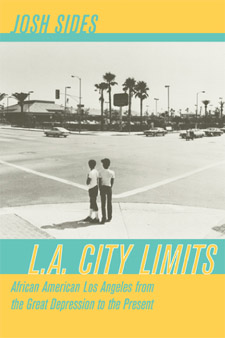 | Title: L.A. city limits: African American Los Angeles from the Great Depression to the present Author: Sides, Josh 1972- Published: University of California Press, 2004 Subjects: History | African American Studies | Urban Studies | Californian and Western History | California and the West Publisher's Description: In 1964 an Urban League survey ranked Los Angeles as the most desirable city for African Americans to live in. In 1965 the city burst into flames during one of the worst race riots in the nation's history. How the city came to such a pass - embodying both the best and worst of what urban America offered black migrants from the South - is the story told for the first time in this history of modern black Los Angeles. A clear-eyed and compelling look at black struggles for equality in L.A.'s neighborhoods, schools, and workplaces from the Great Depression to our day, L.A. City Limits critically refocuses the ongoing debate about the origins of America's racial and urban crisis. Challenging previous analysts' near-exclusive focus on northern "rust-belt" cities devastated by de-industrialization, Josh Sides asserts that the cities to which black southerners migrated profoundly affected how they fared. He shows how L.A.'s diverse racial composition, dispersive geography, and dynamic postwar economy often created opportunities - and limits - quite different from those encountered by blacks in the urban North. [brief] Similar Items |
| 56. | 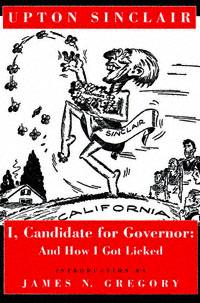 | Title: I, candidate for governor: and how I got licked Author: Sinclair, Upton 1878-1968 Published: University of California Press, 1994 Subjects: History | Politics | California and the West | United States History | Californian and Western History | Autobiography | American Studies Publisher's Description: Here, reprinted for the first time since its original publication, is muckraking journalist Upton Sinclair's lively, caustic account of the 1934 election campaign that turned California upside down and almost won him the governor's mansion.Using his "End Poverty in California" movement (more commonly called EPIC) as a springboard, Sinclair ran for governor as a Democrat, equipped with a bold plan to end the Depression in California by taking over idle land and factories and turning them into cooperative ventures for the unemployed. To his surprise, thousands rallied to the idea, converting what he had assumed would be another of his utopian schemes into a mass political movement of extraordinary dimensions. With a loosely knit organization of hundreds of local EPIC clubs, Sinclair overwhelmed the moderate Democratic opposition to capture the primary election. When it came to the general election, however, his opposition employed highly effective campaign tactics: overwhelming media hostility, vicious red-baiting and voter intimidation, high-priced dirty tricks. The result was a resounding defeat in November. I, Candidate tells the story of Sinclair's campaign while also capturing the turbulent political mood of the 1930s. Employing his trademark muckraking style, Sinclair exposes the conspiracies of power that ensured big-money control over the media and other powerful institutions. [brief] Similar Items |
| 57. | 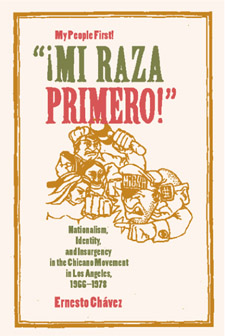 | Title: "Mi raza primero!" (My people first!): nationalism, identity, and insurgency in the Chicano movement in Los Angeles, 1966-1978 Author: Chávez, Ernesto 1962- Published: University of California Press, 2002 Subjects: History | California and the West | Californian and Western History | Chicano Studies | Sociology | Politics | Social Problems | Immigration Publisher's Description: ¡Mi Raza Primero! is the first book to examine the Chicano movement's development in one locale - in this case Los Angeles, home of the largest population of people of Mexican descent outside of Mexico City. Ernesto Chávez focuses on four organizations that constituted the heart of the movement: The Brown Berets, the Chicano Moratorium Committee, La Raza Unida Party, and the Centro de Acción Social Autónomo, commonly known as CASA. Chávez examines and chronicles the ideas and tactics of the insurgency's leaders and their followers who, while differing in their goals and tactics, nonetheless came together as Chicanos and reformers. Deftly combining personal recollection and interviews of movement participants with an array of archival, newspaper, and secondary sources, Chávez provides an absorbing account of the events that constituted the Los Angeles-based Chicano movement. At the same time he offers insights into the emergence and the fate of the movement elsewhere. He presents a critical analysis of the concept of Chicano nationalism, an idea shared by all leaders of the insurgency, and places it within a larger global and comparative framework. Examining such variables as gender, class, age, and power relationships, this book offers a sophisticated consideration of how ethnic nationalism and identity functioned in the United States during the 1960s and 1970s. [brief] Similar Items |
| 58. |  | Title: Conquests and historical identities in California, 1769-1936 Author: Haas, Lisbeth Published: University of California Press, 1995 Subjects: History | Californian and Western History | Ethnic Studies | Latino Studies | American Studies | Gender Studies | California and the West | United States History Publisher's Description: Spanning the period between Spanish colonization and the early twentieth century, this well-argued and convincing study examines the histories of Spanish and American conquests, and of ethnicity, race, and community in southern California. Lisbeth Haas draws on a diverse body of source materials (mission and court archives, oral histories, Spanish language plays, census and tax records) to build a new picture of rural society and social change.A borderlands and Chicano history, Haas's work provides a richly textured study of events that took place in and around San Juan Capistrano and Santa Ana in present-day Orange County. She provides a vivid sense of how and why the past acquires meaning in the lives that make up the historical identities she discusses. The voices of Juaneño and Luiseño Indians, Californios, and Mexicans are heard along the shifting faultlines of economic, social, and political change.This is one of the first truly multiethnic histories of California and of the West. It makes clear that issues of multiculturalism and ethnicity are not recent manifestations in California - they have characterized social and cultural relationships there since the late eighteenth century. [brief] Similar Items |
| 59. | 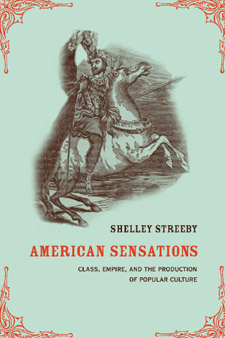 | Title: American sensations: class, empire, and the production of popular culture Author: Streeby, Shelley 1963- Published: University of California Press, 2002 Subjects: American Studies | American Literature | Californian and Western History | Popular Culture Publisher's Description: This innovative cultural history investigates an intriguing, thrilling, and often lurid assortment of sensational literature that was extremely popular in the United States in 1848--including dime novels, cheap story paper literature, and journalism for working-class Americans. Shelley Streeby uncovers themes and images in this "literature of sensation" that reveal the profound influence that the U.S.-Mexican War and other nineteenth-century imperial ventures throughout the Americas had on U.S. politics and culture. Streeby's analysis of this fascinating body of popular literature and mass culture broadens into a sweeping demonstration of the importance of the concept of empire for understanding U.S. history and literature. This accessible, interdisciplinary book brilliantly analyzes the sensational literature of George Lippard, A.J.H Duganne, Ned Buntline, Metta Victor, Mary Denison, John Rollin Ridge, Louisa May Alcott, and many other writers. Streeby also discusses antiwar articles in the labor and land reform press; ideas about Mexico, Cuba, and Nicaragua in popular culture; and much more. Although the Civil War has traditionally been a major period marker in U.S. history and literature, Streeby proposes a major paradigm shift by using mass culture to show that the U.S.-Mexican War and other conflicts with Mexicans and Native Americans in the borderlands were fundamental in forming the complex nexus of race, gender, and class in the United States. [brief] Similar Items |
| 60. | 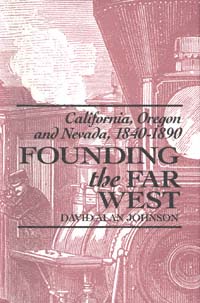 | Title: Founding the Far West: California, Oregon, and Nevada, 1840-1890 Author: Johnson, David Alan 1950- Published: University of California Press, 1992 Subjects: History | United States History | Californian and Western History | California and the West Publisher's Description: Founding the Far West is an ambitious and vividly written narrative of the early years of statehood and statesmanship in three pivotal western territories. Johnson offers a model example of a new approach to history that is transforming our ideas of how America moved west, one that breaks the mold of "regional" and "frontier" histories to show why Western history is also American history.Johnson explores the conquest, immigration, and settlement of the first three states of the western region. He also investigates the building of local political customs, habits, and institutions, as well as the socioeconomic development of the region. While momentous changes marked the Far West in the later nineteenth century, distinctive local political cultures persisted. These were a legacy of the pre-Civil War conquest and settlement of the regions but no less a reflection of the struggles for political definition that took place during constitutional conventions in each of the three states.At the center of the book are the men who wrote the original constitutions of these states and shaped distinctive political cultures out of the common materials of antebellum American culture. Founding the Far West maintains a focus on the individual experience of the constitution writers - on their motives and ambitions as pioneers, their ideological intentions as authors of constitutions, and the successes and failures, after statehood, of their attempts to give meaning to the constitutions they had produced. [brief] Similar Items |